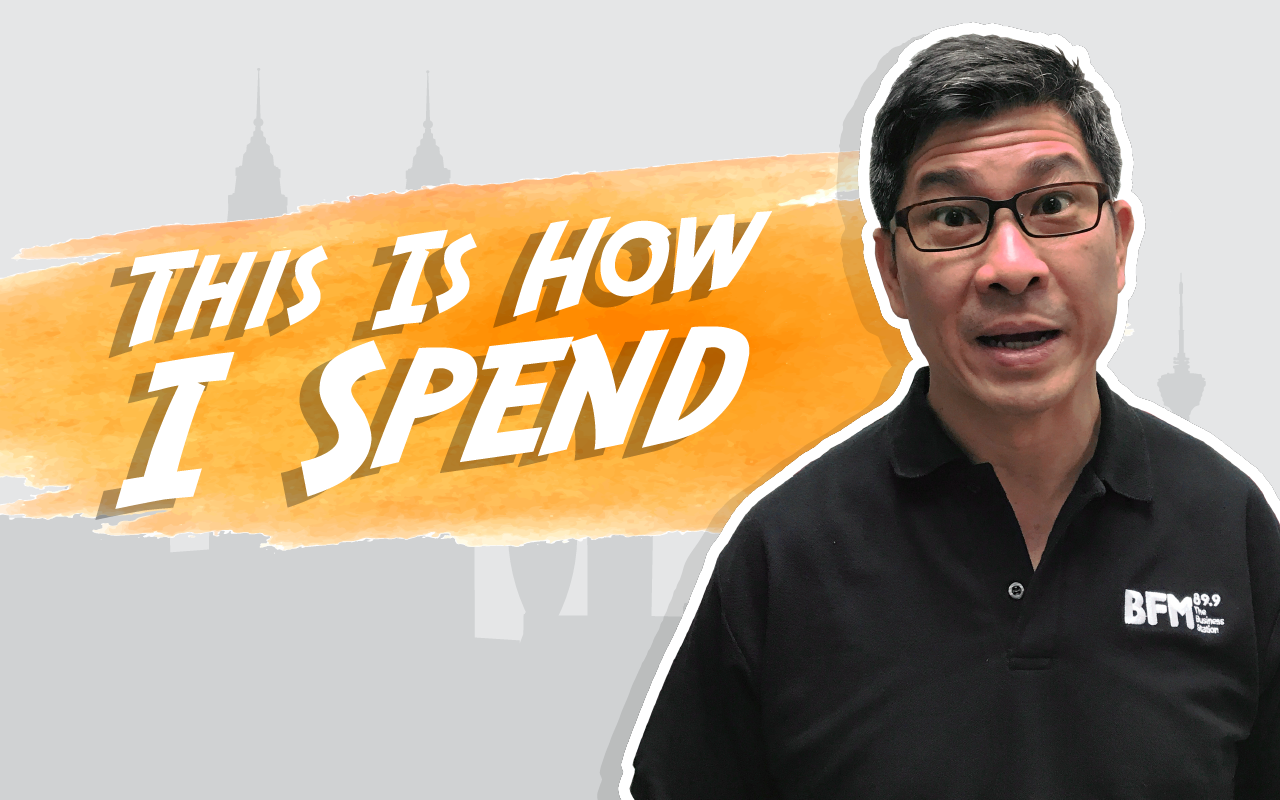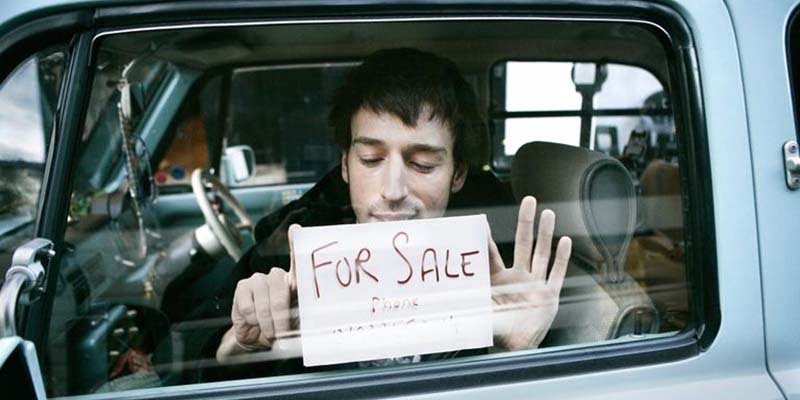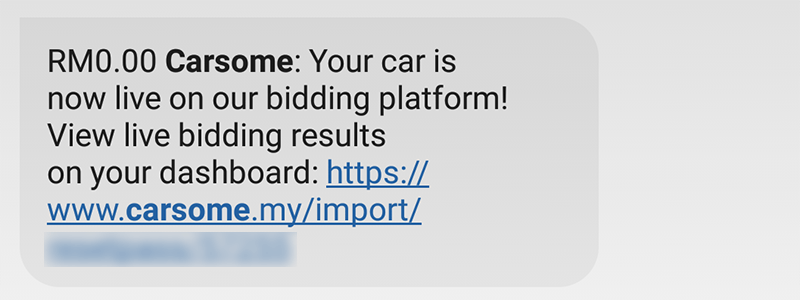
In 1997, Malek Ali ventured into the classifieds business with KLClassifieds. It was a free newspaper and the country’s first all-classifieds publication yet the timing was horrible: The Asian financial crisis surfaced, the business folded, and the budding entrepreneur was left RM300,000 in debt.
Today, Malek is known as the founder of BFM, the country’s first business radio station. He is also a mentor on Endeavor, a platform that pairs some of the biggest names in business with promising entrepreneurs.
In this new series, Malek speaks to iMoney about his journey as an entrepreneur and the insight he has gained by striking it out on his own. Here’s how he spends.
Let’s start with after KLClassifieds bombed. How did you climb out of that RM300k hole?
Something fortunate happened. Mark Chang, whom I knew when I was launching my classifieds product, called me up and asked me to join Jobstreet.
I said, “Okay, I’ll consider it.” He told me, “Malek, your salary will be around RM6,000”, and I was looking at the numbers… I had a RM300,000 debt at that time and I couldn’t make ‘the numbers’ work, right?
So, I apologised. JobStreet had great potential, but I couldn’t do it as I’d probably have to go to Singapore to get a job. I was a management consultant before this and I needed that kind of job to pay off my debt. And I had to earn a hard currency as the ringgit had tanked.
We left it at that. But two or three days later, I got another call from him and he asked me to come over to meet some of the Jobstreet co-founders. It was a really odd interview, it wasn’t about my skills, more like my philosophy, family, ambitions, etc.
Then I was asked to wait in the next room.
After a while, Ng Kay Yip, one of the Jobstreet co-founders I met came in my room. He sat me down and said, “This is what we are going to do, I’ll give you a cheque for RM200,000, you pay off your bank loan, and then you come and work for Jobstreet.
“We’ll figure out a salary for you after we get some venture capital funding, but for now what I’ll do is, I’ll pay off your loan. If we fire you or find you not suitable for the role, you don’t have to pay the loan back. But if you leave on your own accord, you pay the loan back.”
At that moment, I thought I should have told him the real number of my debt, which was towards RM300,000, but I said RM200,000, which was the principal amount. I should have said the real figure. [laughs]
So, in a way, this was a golden-but-strings-attached handshake, but to me, it solved one big worry of my life. Is that serendipity? I mean, who does that for you, right?
That’s how I got into Jobstreet and out of the hole.
Great. So name one lesson you learned from that episode?
Be authentic. If Kay Yip or any of those four guys (Jobstreet founders) smelled any sense of falseness or ego, then that wouldn’t have happened. Be an ethical entrepreneur or businessman and you will be fine.
The media industry is filled with highs and lows. Tell us your money management rituals.
I have two hats on all the time. As a professional, my money habits are fairly stable, meaning fairly conventional. I put some money towards savings, and budget whatever I spend, and it’s nice to see one’s savings expand over time.
As an entrepreneur, it’s slightly different. I can’t charge my company a market salary as it’s not viable for the company and in any case I have equity, so I pay myself a salary that will pay for my basic living expenses.
What if it’s a new venture?
When I go into a new business, I check if I have enough savings, enough to last me during that lean period, and that is aside from retirement or education savings.
That’s what happened with BFM. I put aside a certain sum to start BFM, and had enough left over to tide us over as a family for three to four years. I was lucky: Jobstreet listed and I had a small windfall from that.
The rest of the funds needed for BFM was raised from investors, which included some of the co-founders of JobStreet.
You seem to be risk-averse. What gives?
I’m not so much risk averse but more traumatised from that first entrepreneurial experience. I always try keep my expenses low, no fancy cars, and I consider a coffee at Starbucks as a treat. In fact I don’t own a car in Malaysia anymore; I just Grab or Uber (the cheaper Economy and X versions respectively!).
I even walk to work. I chose an apartment near my office and I walk to work. That’s the entrepreneurial lifestyle.
The co-founders of Jobstreet sold their company for some US$660 million but still live relatively modest lifestyles. Why? I think anyone who’s gone through the Asian financial crisis in 1997 have that battle scar to show for it.
What do you spend your money on then?
Experiences. I recently brought my family for a 10-day vacation in Spain but that’s still Airbnb and not your five-star St. Regis. Yet it was still a great experience.
So I spend on experiences and it doesn’t have to be expensive.
You don't spend on yourself?
Well, I have been battle-scarred, right? So there’s these once every three years (points to his two iPhones, one an iPhone 5, the other an iPhone 6). One for my Malaysia number, the other for my Singapore one. And the iPhone 5 is a hand-me-down from my wife.
What else do I spend on? This (points to Fitbit) a compatible weighing scale that syncs to it, but these are things that help my health.
Though I rarely go to Starbucks, I still like my coffee. So, I have filtered coffee in the office.
That’s the entrepreneur’s lifestyle. What else… like you, I eat out sometimes. So those are my only personal expenditure and that has been my lifestyle. Sadly it is now so ingrained that despite not having to do it anymore, I still do it.
I'm throwing this question out simply because of the correlation between personal debt and consumer spending. What's your take on that?
Cut those unnecessary discretionaries. If you have a problem, then turn to the bank/credit card company and tell them that you have a problem and ask them to give you a debt repayment plan.
Basically, you’re trying to cap that unnecessary discretionary expenditure.
I think you can live without going to the Starbucks of the world. If you’re in debt, you just have to forego it. You really have to live modestly, it’s possible but it’s just hard. It’s tough.
And, maybe, that’s where the problem is. I’ve seen this happen: In your early years, you spend on that odd thing and then you buy something, you buy this and that and before you know it, you have maxed out your credit card. You are just servicing the interest and things like that.
So if that’s the problem, cut the unnecessary discretionary stuff and use the cash to pay down the debt till its zero.
Tell us your best financial hack.
I hate the word hack. It’s a dangerous term in finance. There’s no shortcut, if there was, it would be extremely risky or even a scam.
But there’s one crazy so-called hack that people in Malaysia are doing – you buy a property and you pay 10% down payment. If the property goes up 10%, you sell it and you double your money, because you only put up that 10%.
But what if it goes down 10%? Then you lose your whole capital! The real word for this hack is leverage and it works both ways. It’s a double-edged sword: you can do really well… or you can do really, really badly.
And I’ve been caught up once in this euphoria, of this particular “financial hack”. It worked the first time, but the second time it didn’t.(Luckily, I got out from the second deal with just a haircut).
That’s why I don’t like the word hack because it is basically about making money quickly. But it works both ways, man. If you are on the wrong side of the deal, you’re toast.
All right, how about a tip?
Invest for the long term. Diversify. You need to invest in equities as well, not just in a home. When it comes to unit trusts, the only qualifier I have is look at the fees carefully, but I would say unit trusts are a good way of diversifying.
But I do have one tip: Save some money to invest in the potential 10x-ers. Things that have the potential to be worth ten times of what you bought it at.
What were some of my potential 10X-ers? We’re talking about a time horizon of the last 12 years. It was Digi and KNM in the mid-2000s, then Google.
I bought into Visa, Facebook and Alibaba when they listed, and Amazon when I realised that BFM, located on the other side of the world, was buying this Amazon service called AWS. Tencent and BYD are now on my radar screen. So out of them, so far, there are about two 10x-ers, one 8x-er, three 4x-ers, and one half-Xer. The last one was Fitbit!
In identifying these 10x-ers, I do look out for companies who are still led by their founders. Bet against a driven founder at your peril. That explains my faith in Facebook, Google, Amazon, Alibaba and Tencent.
What’s the best financial advice you’ve received?
Learn on other people’s time. When I started KLClassifieds, I was learning on my own time. That short lesson on entrepreneurship landed me RM 300,000 in debt.
It could have been easier, I could have learnt client and account management if I had stayed at the Boston Consulting Group for another 3 years (I had to learn this the hard way at KLClassifieds, and later at JobStreet).
But I did learn on other people’s time when I was a lawyer at Allen & Overy and when I was in product development at Maxis. That two-year stint at Maxis put me in good stead in terms of being able to read the mobile industry for the next seven years.
So don’t discount the value of spending a bit of time being employed, and learning lifelong skills while being paid a salary at the same time. Don’t feel you need to be in such a rush. If you have not grasped something, it might not be the time to go yet.
Nice. Last, who would you want to see answer these questions?



















